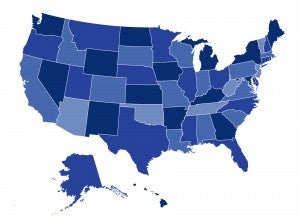
The fundamental premise of health insurance is that the financial risk of incurring health care costs is pooled between the healthy and the sick. However, today’s individual insurance market is severely fragmented, with insurers in most states cherry-picking younger, healthier individuals who pay lower premiums at the expense of older and sicker individuals who, in turn, are less likely to be able to find affordable coverage.
The Affordable Care Act seeks to level the playing field through a range of health insurance reforms that will lead to health care costs being shared more evenly between the healthy and the sick. However, these reforms have led to concerns that in the short term, some individuals who have been used to paying lower premiums could experience “rate shock.” In the longer term, policymakers must address concerns that the exchanges will be vulnerable to adverse selection if they attract a disproportionate number of older, sicker enrollees. While the ACA includes federal strategies to reduce the twin risks of rate shock and adverse selection, states have considerable flexibility to implement additional strategies to manage their markets and protect consumers.
In a joint study with the Urban Institute and released this week as part of a Robert Wood Johnson Foundation-funded project to monitor the implementation of the ACA in 11 states (Alabama, Colorado, Illinois, Maryland, Michigan, Minnesota, New Mexico, New York, Oregon, Rhode Island, and Virginia), we found that while states can use an array of strategies to protect against rate shock and adverse selection, no single strategy was pursued by all states and only a few states are pursuing most of these strategies, while other possible strategies went unexplored.
A few of the strategies that states pursued included:
- Reinsurance. One state – Oregon – has established a supplemental reinsurance program to moderate premiums in the early years of the exchanges. Another state – Maryland – granted their exchange the authority to do so.
- High Risk Pools. Colorado, Illinois, Maryland, Minnesota, and Oregon have established plans to promote a smooth transition for high risk pool members into individual market coverage, either on- or off-exchange.
- Early Renewals. Four of the study states – Illinois, New York, Oregon, and Rhode Island, acted to limit or prohibit insurers from renewing policies before the end of 2013 in order to delay compliance with the ACA’s new market rules.
- Protecting Exchanges. Maryland, New York and Oregon are guarding against insurers undercutting the exchanges by “locking them out” if they don’t participate in the first year, and they’re limiting the sale of catastrophic plans. And these states, along with Colorado, are also standardizing the compensation of insurance brokers inside and outside the exchanges to deter inappropriate steering to one market or another.
Our report concludes that states will be well-served to develop data collection and analysis strategies to monitor rates and premiums both inside and outside the exchanges, so that problems can be identified and addressed early on. These efforts seem especially warranted in states where enrollment through the marketplace continues to be challenging for consumers, as older and sicker individuals may be more willing to stick with the process in hopes of finding a more affordable policy. You can check out the full report here.
Additional reports generated by the Urban Institute’s state monitoring project can be found here. CHIR is composed of a team of nationally recognized experts on private health insurance and health reform. For more on our work, please see our website and blog.

